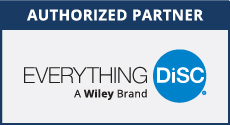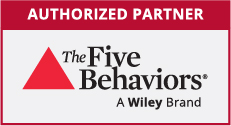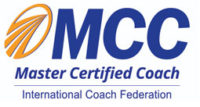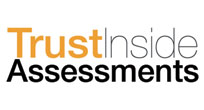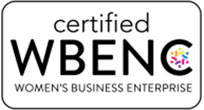People-Whispering Tip: Changing Habits Changes Culture
DiSC Assessment Application: The Five Behaviors of a Cohesive Team, Five Behaviors of a Cohesive Team Product Briefings Across the Country, and The Work of Leaders Book
Transformational Coaching Tip: Tips for Championing Execution Through Feedback
People Whispering Tips:
“Habit is habit and not to be flung out of the window by any man but coaxed downstairs a step at a time.” | Mark Twain
“In terms of getting people to experiment more and take more risk, there are three things that immediately come to mind. Number one of course, is role-modeling it yourself. Number two is, when people take intelligent, smart risks and it doesn’t work out, not shooting them. And number three, being honest with yourself.” | John P. Kotter
Changing Habits Changes Culture
There is a lot of talk about change management in corporations today as there has been for decades. Change management is really not as mysterious as some of the gurus might have us believe.
Ultimately, managing change is about leveraging human nature to modify individual behavior. Simply put, organizations cannot change their culture unless individual employees change their behavior.
So how do we facilitate this change in behavior and eventually go beyond behavioral change alone to true transformation? How can leaders encourage and instill the kind of behavioral and mindset shifts that are necessary to succeed in today’s fast-paced, global, virtual, ever-changing economy?
To answer that question, I’d like to add my perspective to a great article in the July-August 2014 Harvard Business Review written by Keith Ferrazzi. His article outlines the ways in which leaders can learn about corporate culture change from an unlikely source: addiction treatment programs.
The article outlined ten key principles. I have summarized the first five principles adding my own color commentary from my experience and study of the subject. I will write about the last five principles in an upcoming issue. I would love to hear more from you about how you have been able to facilitate positive culture change in your work environment so please leave a comment below.
Let’s look at some of the principles for facilitating change successfully.
Principle #1: Readiness to Change
Preeminent change management expert John Kotter has written, “People don’t change a minute before they are ready.” And organizations often don’t change until they are faced with a crisis. I always say you cannot really motivate people to change, but you can create the conditions around which they want to change for themselves.
One of the contributing factors to creating the kind of environment where people are willing to change is creating the “vulnerability-based trust” I wrote about last month while discussing the “Five Behaviors of a Cohesive Team” facilitation process.
Keith Ferrazzi makes the same point in the HBR article by mentioning that sometimes a leader’s admission of vulnerability helps others recognize and address their own areas for growth and development. His client Lincoln Financial has a practice of beginning meetings with a “personal and professional check-in.” People talk for a few minutes about what is going on in their lives and this requires them to be vulnerable and builds trusting team relationships.
Principle #2: Replace Old Habits With New Ones
It is important for people to let go of negative habits and to replace them with more effective behaviors. This requires an understanding of how to create mindset shifts in addition to behavioral change alone.
People need to realize the reasons why their old behavior is no longer serving them and adopt new beliefs about what is possible if they do try on new behaviors. This is the focus of much of my Leadership Coaching.
I have encouraged people to give and receive more effective motivational and developmental feedback for example. Giving and receiving feedback effectively is a skill and practice greatly underutilized in almost every company I have ever seen. Making clear requests is another skill that requires a mindset as well as a behavioral shift which can result in dramatically positive results.
Principle #3: Peer Support and Pressure Drive Change
It is important to realize that change does not happen in a vacuum. If we gather people together with similar issues to solve and they become focused on a positive vision for change, then miraculous things can occur. The key is to stay focused on a positive vision and to create accountability.
Once again, the “Five Behaviors of a Cohesive Team” process helps to create accountability once people trust one another and learn how to surface and process healthy conflict rather than suppress or use it destructively. This also requires collaboration and influencing skills in order to facilitate change in an organization.
Principle #4: Sponsorship Deepens Commitment and Sparks Results
One of the key ways an organization can leverage this principle is by identifying and celebrating early adopters of the behaviors a company wants to instill. I have had the good fortune of working with Aetna as they undergo a major cultural change initiative. One of the effective things they have done is to create a volunteer cadre of “culture change advocates” who meet on a regular basis to talk about positive ways to instill the kinds of behaviors needed to move the company towards its 2020 vision.
Peer coaching and mentoring are other ways to deepen employee engagement and commitment. Pairing culture change leaders with those who are slower to adopt the new behaviors can be an effective way to encourage everyone to see the benefits of change. When paired with outside training and coaching, this can be a dynamite strategy for gaining alignment.
Principle #5: Community Without Hierarchy is a Catalyst for Change
Let’s face it – human beings are hierarchical by nature, and that is not necessarily a bad thing if hierarchy is managed in an open and collaborative way. That said, the evidence for the effectiveness of self-directed team-based cultures is overwhelmingly positive. One of my favorite books, The Flight of the Buffalo by Ralph Stayer and James Belasco, chronicles the journey of Johnsonville Sausage and its attempt to catalyze cultural transformation.
One of Stayer’s key learnings is the importance of shared leadership such that the individuals with the best skills and experience for a particular task come to the forefront on any given initiative to benefit the whole (as does a flock of geese). Traditional hierarchy can sometimes prevent this kind of agility and can slow down the execution of an important task or initiative.
To learn more about how to create healthy teams by applying these principles, call us at 404-327-6330 or email me at Laura@lauraadavis.com.
DiSC® Assessment Application(s)
1) The Five Behaviors of a Cohesive Team is now available!
Best-selling author Patrick Lencioni has joined forces with Wiley (formerly Inscape Publishing) to offer this excellent process for building effective teams.
Teamwork is the lifeblood of an effective organization. Unlocking the code to getting groups of people to work together in high-performing and joyous ways is the key to a profitable and sustainable corporate culture.
The process consists of an individual and team assessment based upon Lencioni’s time-tested, proven model. The accompanying Facilitator Kit walks you through his research-based model to uncover where your team’s strengths and areas for growth and development lie.
To take advantage of this well-designed, time-tested method to unleash your team’s potential, call our office at 404-327-6330 or email Laura@lauraadavis.com.
2) Five Behaviors of a Cohesive Team Product Briefing near you!
Wiley VP Julie Straw will be hitting the road this summer to conduct a series of product briefings about “The Five Behaviors of a Cohesive Team.”
To register for one of these sessions, please call us at 404-327-6330 or email Laura at Laura@lauraadavis.com.
At these breakfast and morning educational sessions (from 8 AM to 10 AM), you will walk away with:
- A high-level overview of The Five Behaviors Model
- Insights from the team assessment that you can apply to your own team and organization
- Real-life examples from the companies who have used The Five Behaviors of a Cohesive Team as their competitive advantage
- Patrick Lencioni’s New York Time best-selling ebook The Five Dysfunctions of a Team
Detroit, MI
Springfield, MA
San Diego, CA
Los Angeles, CA
King of Prussia, PA
Harrisburg, PA
St. Louis, MO
July 24, 2014
August 13, 2014
August 21, 2014
August 20, 2014
September 10, 2014
September 11, 2014
October 29, 2014
3) The Work of Leaders: How Vision, Alignment and Execution Will Change the Way You Lead by Julie Straw, Mark Scullard, Susie Kukkonen, and Barry Davis
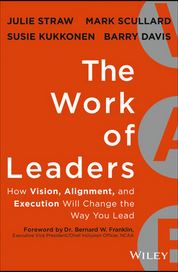 This book from my friends and colleagues at Wiley introduces the Vision-Alignment-Execution model which synthesizes the 3 fundamental responsibilities all leaders have. Leaders must craft a vision, build alignment, and champion execution. Of course, there is a lot of skill required in each of these areas which is what the book is all about. First a few definitions are in order:
This book from my friends and colleagues at Wiley introduces the Vision-Alignment-Execution model which synthesizes the 3 fundamental responsibilities all leaders have. Leaders must craft a vision, build alignment, and champion execution. Of course, there is a lot of skill required in each of these areas which is what the book is all about. First a few definitions are in order:
- Crafting a Vision: imagining an improved future state that the group will make a reality through its work.
- Building Alignment: getting to the point where everyone in the group understands and is committed to the direction of the organization.
- Championing Execution: ensuring that the conditions are present for the imagined future to be turned into a reality.
Stay tuned for future webinars and trainings which will delve into the VAE model so you will know how you can begin to apply it to your leadership challenges.
For more on how to increase your organization’s effectiveness using the Work of Leaders profile and/or training materials, please call us at 404-327-6330 or email me at Laura@lauraadavis.com.
Transformational Coaching Tip: Championing Execution Through Feedback
Since I am highlighting The Work of Leaders book in this ezine, I thought it might be helpful to take each driver for each aspect of the VAE model in turn and offer some tips for how to implement it in the real world. Stay tuned for future editions of this ezine to learn about the other drivers to master in your leadership journey.
The three drivers of Championing Execution are Momentum, Structure, and Feedback.
Championing Execution is relevant at all levels of an organization. The third and final driver of championing execution is Feedback. These tips can be found on page 146 of the book.
Tips for Feedback:
- Create a culture of candor and trust by acknowledging your own mistakes.
- Have regular, semi-formal dialogues about what isn’t working.
- Focus on the issues and not the people.
- Make a conscious effort to prioritize acknowledging people’s contributions.
- Make sure your praise is genuine.
For assistance in applying any of these best practices into your workplace for more powerful, effective results, feel free to call us at 404-327-6330 or email Laura at Laura@lauraadavis.com.


